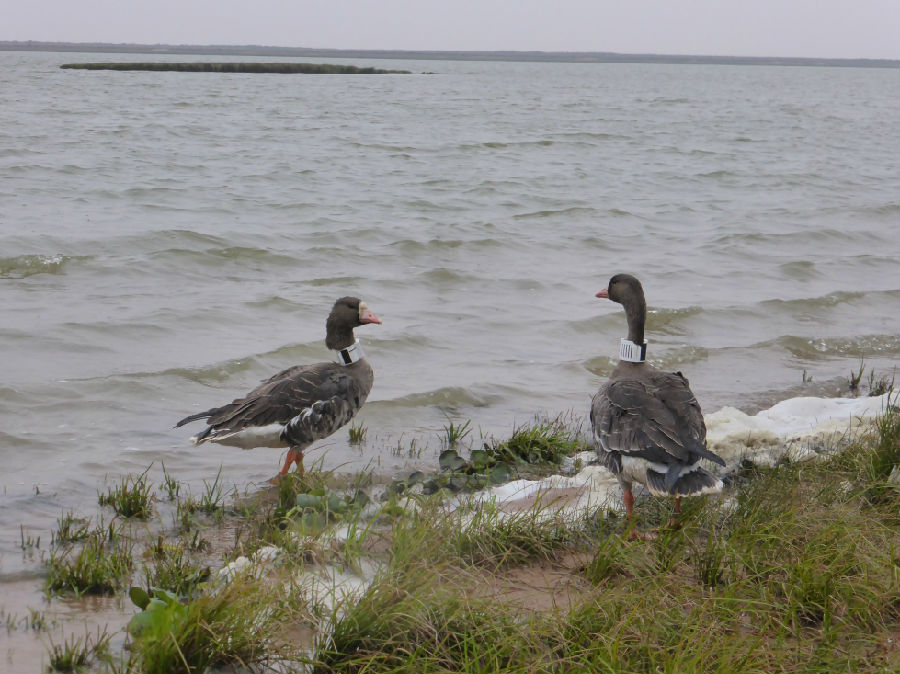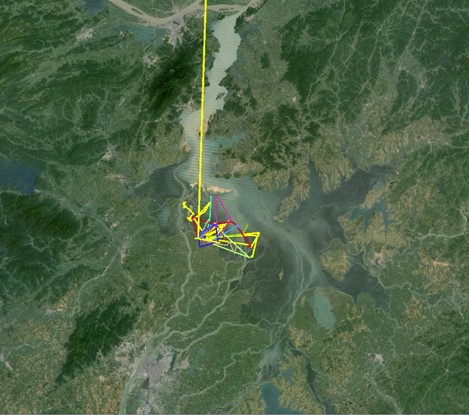-- Tsinghua University cooperating with Poyang Lake National Nature Reserve
Poyang Lake is one of the largest wintering site for East Asian migratory birds. Hundreds of thousands of birds gather in Poyang Lake region annually, including over 95% of white cranes, 50% of white-napped cranes and 60% of Swan geese in the world. From Dec 5 to 15 this year, Yali Si’s research group from CESS at Tsinghua University, in collaboration with the National Nature Reserve Authority, carried out the second phase of satellite-tracking of migratory birds in Poyang Lake. This field campaign is supported by Tsinghua University and the National Natural Science Foundation of China (project No. 41471347) - "The influence of environment on spatiotemporal migration patterns of East Asian birds".
In jointly efforts by Dachahu protection site in Poyang Lake and the research group of Tsinghua University, this tracking of birds has been accomplished successfully. Within 10 days, 37 healthy geese attached with neck and backpack loggers were released, including some vulnerable species - 3 Lesser White-fronted Geese and 1 Swan Goose, and Class Two nationally protected species - 20 Greater White-fronted Geese, and 13 Bean Geese.

Figure 1 Satellite tracking migratory bird in Poyang Lake region: white-fronted geese
Now the research group has collected part of the satellite tracking data. The activity of 37 tracked geese covered the Poyang Lake region, specifically Candou Lake, Dachi Lake, Yuanshazhou and Nanjishan (Fig. 2). Using tracking data, combined with land use data derived from remote sensing, the movement pattern of migratory birds in the middle and lower reaches of Yangtze River and bird habitat selection can be further explained. In March and April next year, when spring migration begins, tracking of nearly 40 birds will provide core data for the study of migration along the East Asian Australian flyway at a population level.

Figure 2 Movement patterns of tracked geese in Poyang (by Dec 16, 2015)
The research group had carried out the first phase of bird tracking in January this year. At that time, 4 Greater White-fronted Geese were tracked. Now 3 of them are in good health, and have successfully completed their spring migration from Poyang Lake to Lena River Delta in Russia, 2 of which came back to Poyang Lake in November to spend winter and 1 stayed in Caizi Lake in Anhui.
Supported by Tsinghua University and the National Natural Science Foundation of China, Yali Si’s research group carried out the second phase of satellite tracking of migratory birds. The migration flyway, key stopover sites, and movement patterns derived from tracking data will provide crucial information for an improved management and targeted protection for East Asian migratory birds, and support the construction and protection of wetland biosphere for migratory birds.